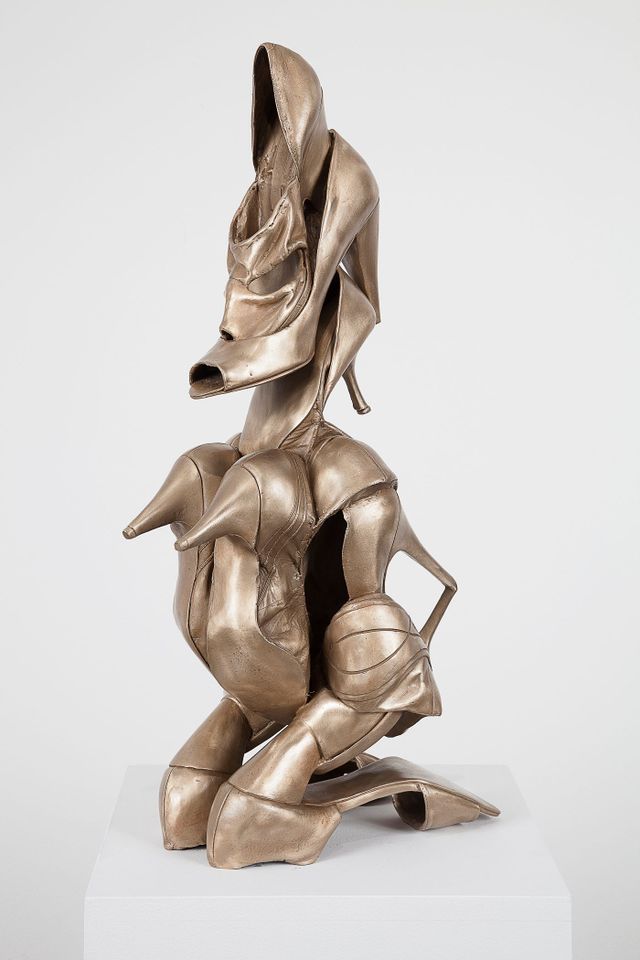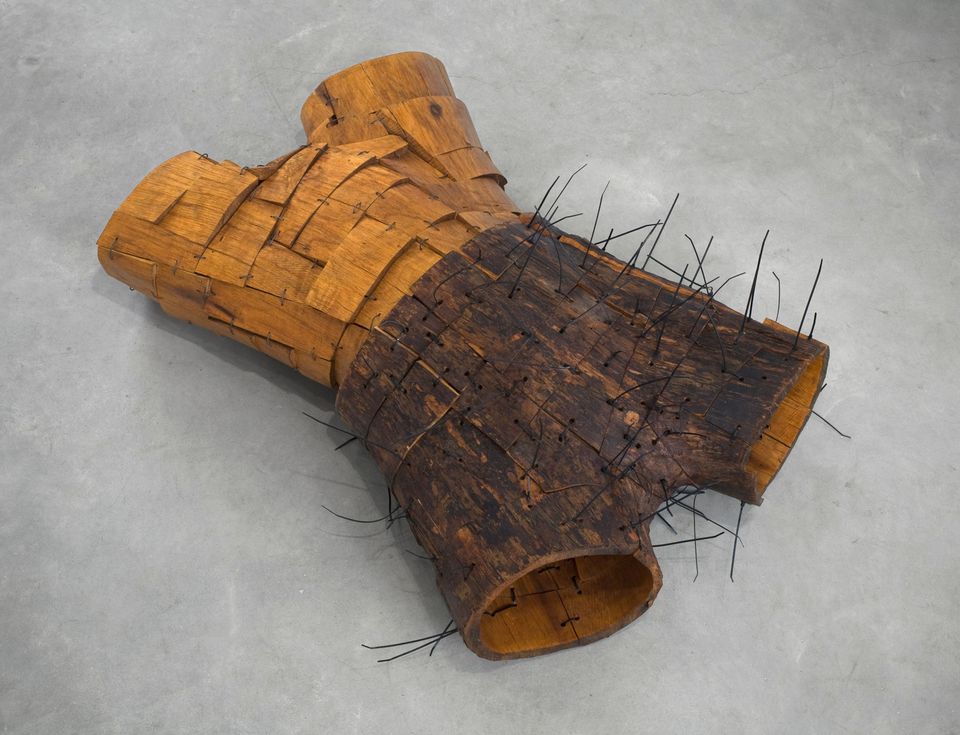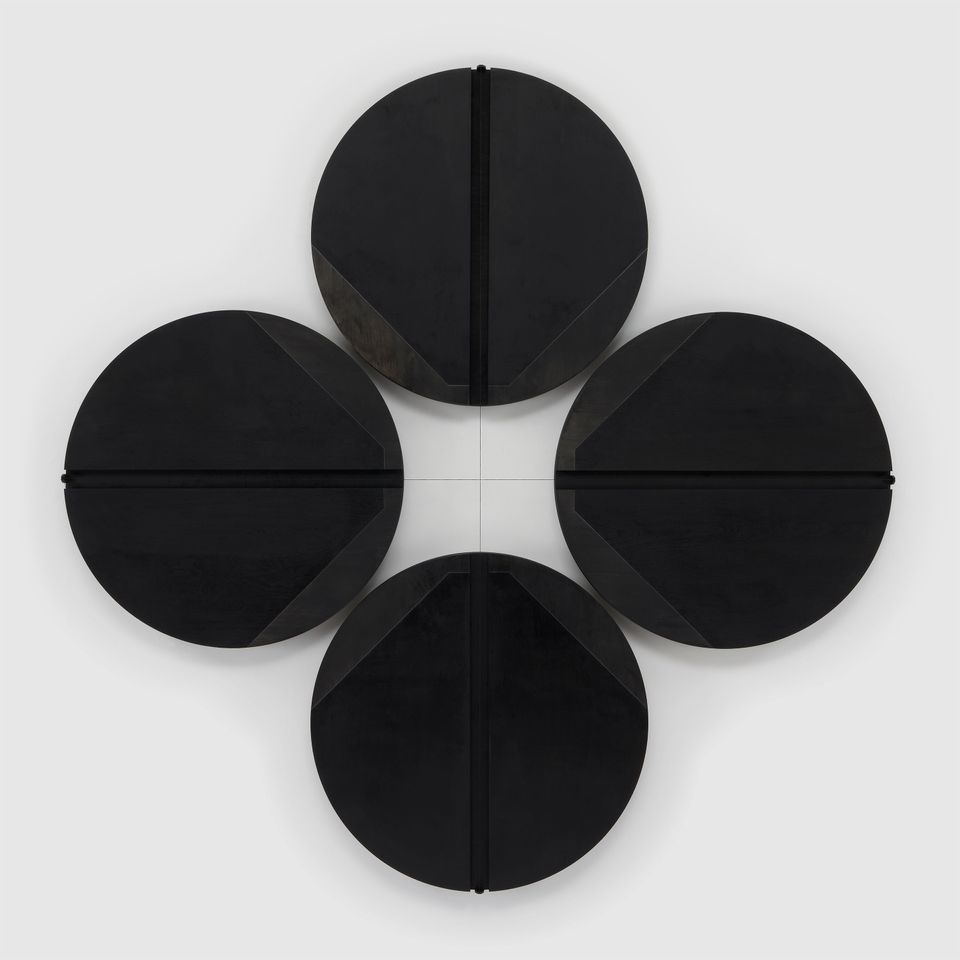Earlier this year, The National Academy of Design (NAD), debuted the exhibit Sites of Impermanence, as a way to highlight works of art and architecture from their newly elected Academians. Founded in 1825, the NAD is an honorary society for visual artists and architects, dedicated to using art as a tool for education. Each year, the institution selects a new group of National Academians–specific artists and architects that have been hand picked by their peers in recognition of their impact in American art. In Sites of Impermanence, which is on view through May 11, the Academians, including artists Sanford Biggers, Willie Cole, and Mel Kendrick, showcase work that explores how their various unique identities make up the world we live in today. Three of those artists
Last night, Biggers, Cole, and Kendrick reunited for a moderated discussion about art in the context of contemporary social issues, and ways that sustainability plays a future in the world of art.

The discussion, presented in partnership with Brooklyn Rail, was moderated by William Corwin, a sculptor and journalist from New York. Using the term ‘syncretism’ as a focal point for the discussion, the Academian’s explored ideas of cultural diffusion that have arisen through colonization, and the ways sculptural practices can expand through exploring this topic. Looking into the use of recycling materials, the importance of melding traditions, and exploring sculpture as a window into personal identities, were the themes guiding their discussion throughout the event.
Sanford Biggers is a conceptual artist and sculptor, whose work looks at the intertwinings of perspective and overlooked American history, and how that plays into modern social, political, and economic happenings. A Los Angeles native, Biggers draws and paints on antique quilts that are rumored to have been used as signposts on the Underground Railroad.

Willie Cole is an abstract artist that uses everyday objects, such as steam irons and high-heeled shoes, turning them into colorful sculptures and installations. Also working with various paper materials, Cole uses his heritage as a Black American in the United States, as a gateway to explore how objects can store memories of the past.
Mel Kendrick is a sculptor who uses an array of materials such as cast bronze, rubber, concrete, a variety of woods, steel, and resin to explore the connection between human and natural forms. Kendrick’s unique method of sculpting includes taking things apart and putting them back together in order to not disrupt their natural states.

The National Academians recognized these artists for their contributions to American art and architecture. The three artists were able to discuss the importance of community within an artistic space, and society in general, exploring the idea that when people come together, it heightens our values, which in turn makes for better artistic and sculptural practices. The discussion also emphasized the opportunity that we have in front of us today: the importance of looking to the past to inform our present, and future.
The discussion expands on the central idea of the exhibition, Sites of Impermanence: how architecture and art can serve as physical, historical markers.
“Time is the ultimate filter of historical memory, but the physical presence of art and architecture adds a material and tactile reminder of what aesthetic sensibilities remain or carry over with time,” said NAD chief curator, Sara Reisman, of the show.

This year’s Academians also featured in the exhibition include Alice Adams, Torkwase Dyson, Richard Gluckman, Carlos Jimenez, and Sarah Oppenheimer. Their pieces include assemblage, land art, drawing, printmaking, and interactive installations, with each artist using time and identity as a framework for their work. Using personal experience as inspiration, the exhibition explores how the personal often speaks to culture at large; and how time, more than anything, dictates our experiences. As time moves, our systems become adaptable; ultimately dictating the way art and architecture are created and produced.
‘Sites of Impermanence’ is on view at the Rick Wester Fine Art gallery in New York City through May 11.

